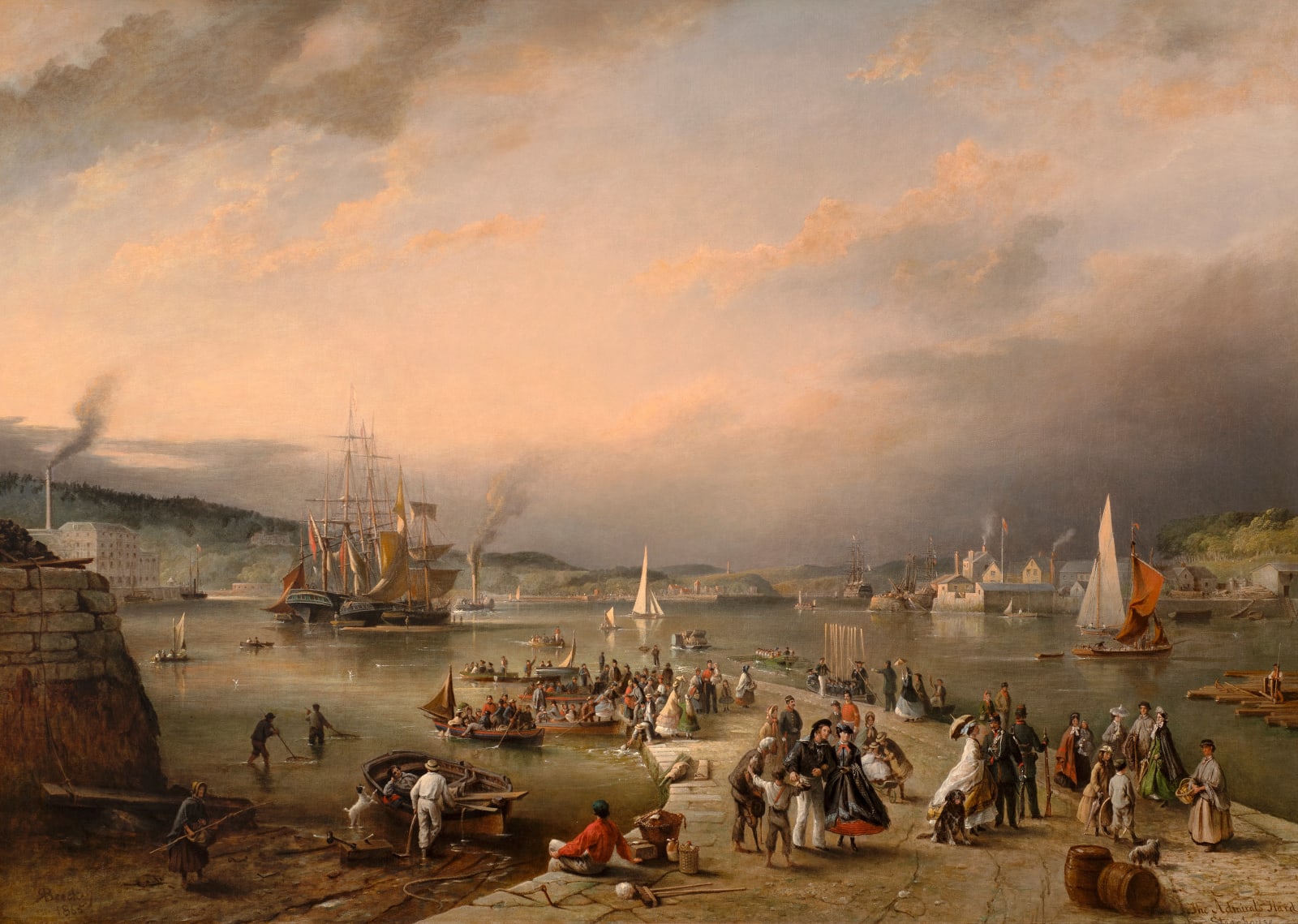Richard Brydges Beechey 1808-1895
Framed: 93.5 x 126 cm.; 37 x 49½ in.
Richard Brydges Beechey holds a unique position as both a naval professional and a skilled artist, bringing an authentic sense of experience to his canvases that sets his work apart from many of his contemporaries. Created in 1865, the year after Richard Brydges Beechey retired as Admiral, this substantial canvas marks the peak of an extraordinary career that included Pacific exploration, Irish coastal surveying, and extensive knowledge of Royal Navy protocol. Very few artists in British maritime tradition held such genuine credentials: son of Royal Academician Sir William Beechey, veteran of the 1825-1828 Pacific voyage aboard HMS Blossom, and notably the first to sketch John Adams, the last surviving mutineer from HMS Bounty, on Pitcairn Island.
Viewed from the western shore of Stonehouse Creek, the artist depicts a bustling scene with an eye for detail that extends throughout the composition. Gathered on the jetty are uniformed naval officers greeted by women and children; behind more boats can be seen arriving on the jetty that recedes into the distance, where a steam-assisted warship symbolises the evolution of naval power. The accuracy of architectural detail, careful observation of costume, and feel for atmosphere exemplify Beechey’s naval paintings. Its scale and ambition places it within the celebrated tradition of 17th-century Dutch marine painting.
In 1835, Beechey was appointed to the Admiralty Survey of Ireland and in 1844 he married Frideswide Maria Moore Smyth of Portlick Castle. Over three decades he made valuable surveys of the Irish coast and in 1868 was elected an Honorary Royal Hibernian Academician for his dual contribution to Irish art and cartography.
Provenance
Christie's, London, 17 November 1989, lot 30Private Collection (purchased from the above)




